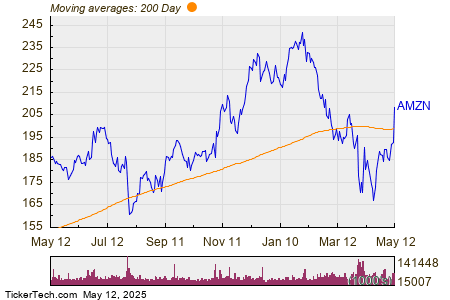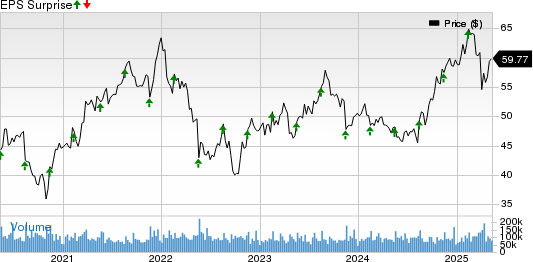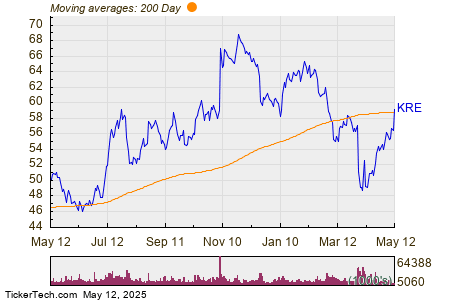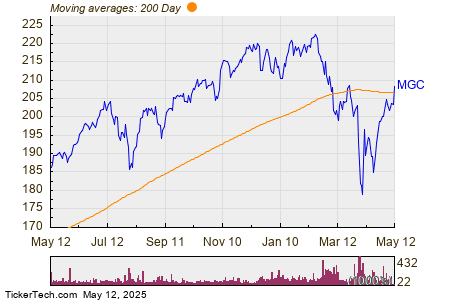Adapting Trading Strategies in Uncertain Market Conditions
In an era where market fluctuations are increasingly common, the traditional “buy and hold” strategy may fall short of expectations.
Editor’s Note: During significant market downturns, it’s common for investors to panic and sell their holdings. While understandable, this reaction is typically counterproductive.
Instead, focus on adjusting your trading approach to one that not only safeguards your investments but also allows you to take advantage of market volatility.
Keith Kaplan, CEO of TradeSmith, offers a solution through artificial intelligence. Their proprietary technology, which utilizes machine learning models trained on over 1.3 quadrillion data points, enhances predictive capabilities. This allows investors to identify which stocks may rise or fall within the coming month.
The outcome is a strategic edge that can transform your trading experience.
Discover more at the upcoming AI Predictive Power Event on April 16 at 8 p.m. Eastern. Click here to secure your spot!
Now, let’s hear from Keith about how this strategy may benefit you.
The mood during market turmoil can feel overwhelming.
Five years ago, amid the rise of the COVID-19 pandemic, the CBOE Volatility Index (VIX) reached its highest recorded level. Simultaneously, the S&P 500 experienced its third-largest one-day percentage decline, plummeting by 11.98%.

We felt similar anxiety after the S&P 500 saw a dramatic 10% decline in response to President Trump’s announcement of tariffs on April 2, leading to a record loss of $5 trillion. However, the market has since corrected after the president indicated a pause in tariffs for nations other than China.
This underscores a vital lesson: in times of extreme uncertainty, rather than retreating, it is essential to adapt your trading strategies.
Our breakthrough at TradeSmith could offer a timely solution…
Artificial intelligence has been a popular topic recently, often viewed as a distant concept. However, at TradeSmith, that future is already a reality.
Protecting Investments and Profiting in Crisis
Much of the discussion surrounding artificial intelligence centers on its potential. Yet, we have harnessed AI to achieve market-beating results even during challenging conditions.
Our system helps investors identify profitable opportunities while also avoiding pitfalls. TradeSmith’s AI trading algorithm, known as An-E, or analytical engine, specializes in forecasting stock prices for the upcoming month with remarkable accuracy.
Notably, An-E identifies both potential stocks to buy and those to avoid. In today’s unpredictable market, defensive strategies can prove just as essential as offensive ones.
For instance, consider Occidental Petroleum Corp. (OXY):
- Price at Projection: $46.21
- Projected Price: $49.23 by April 2, 2025
- Confidence Level: 70%
On March 3, 2025, An-E predicted OXY would increase from $46.21 to $49.23 in 21 trading days, indicating a gain of 6.53% with a 70% confidence level. By April 1, 2025, OXY reached $49.19, resulting in a 6.44% profit within that period.
While a modest increase, cumulative results can significantly impact over time.
Additionally, An-E excels at spotting potential declines. On March 4, 2025, it forecasted that Light & Wonder Inc. (LNW) would drop from $106.60 to $92.52 in the subsequent 21 trading days, suggesting a decline of 13.20% with a 63% confidence level. By April 2, 2025, LNW fell to $91.95, reflecting an actual loss of 13.74%.
If investors had known about the 63% likelihood of LNW’s decline, many would have reconsidered their purchase plans. Thus, in volatile markets, the ability to avoid under-performing stocks can be just as crucial as seeking out high performers.
Strategies for Success in Turbulent Markets
Whether enhancing potential gains or mitigating risks, An-E goes beyond conventional trading tools and offers a transformative approach. As markets continue to shift, this technology ensures that investors have the tools to navigate crises effectively.
As we have learned from previous downturns, embracing innovative solutions can provide the resilience needed to thrive in uncertain times.
Discover An-E: Your New Tool for Market Navigation
The world of trading is evolving, with An-E at the forefront of this change. Designed to offer price projections for thousands of stocks, funds, and ETFs over the next 21 trading days, An-E simplifies the trading experience.
In contrast to traditional methods, An-E allows you to step away from constant screen monitoring. Instead of waiting for real-time price changes, you can simply check your email for trade alerts and decide whether to act on them. This ease of use has resulted in significant interest in the service, making it one of our most sought-after technologies in recent years.
Navigating Market Changes with TradeSmith
In response to the current market volatility, TradeSmith is launching an urgent online event to guide investors through these turbulent times. On Wednesday, April 16 at 8:00 p.m. EDT, we will present The AI Predictive Power Event. This event will demonstrate how An-E predicts stock prices with impressive accuracy a month in advance and how these insights can help you identify high-probability trades for short-term gains.
As we witness a transformational economic landscape, global trade dynamics are shifting, and markets are unsettled. Many investors find themselves trying to comprehend these rapid changes. This climate is precisely what An-E is built for.
Embracing Change with AI
In today’s unpredictable markets, traditional strategies like “buy and hold” may no longer suffice. Instead, savvy investors are adapting to market trends, and AI plays a crucial role in this agility. An-E empowers smart money to move in sync with market rhythms, enhancing trading strategies in real time.
Click here to register for the event.
Sincerely,
Keith Kaplan
CEO, TradeSmith
P.S. By signing up for the event, you will receive five of An-E’s most bearish forecasts for the upcoming month. These valuable insights will guide you on which stocks to monitor or avoid during this market fluctuation.







